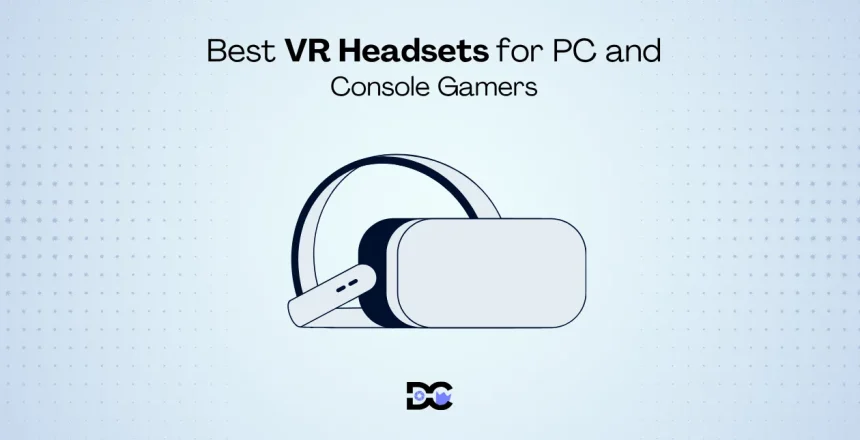Virtual Reality (VR) gaming has quickly transformed from a futuristic idea into a mainstream form of entertainment. A VR headset allows players to step directly into the game, offering a level of immersion that traditional gaming cannot match. Instead of just watching the action, you become part of it, creating a truly engaging experience.
Many gamers hesitate to invest in VR, wondering if the cost is worth it. However, the market shows strong growth—valued at $16.32 billion in 2024 and projected to reach $20.83 billion by 2025—driven largely by consumers adopting VR for gaming and entertainment.
Before purchasing, consider what you need from your VR headset. Do you prefer a powerful PC-based system for premium visuals, a portable standalone model, or a console-compatible device for simplicity? There’s a VR headset suited for every gaming style and budget. This guide will help you choose the one that delivers the best experience for your needs.
Considerations When Choosing VR Headsets for PC
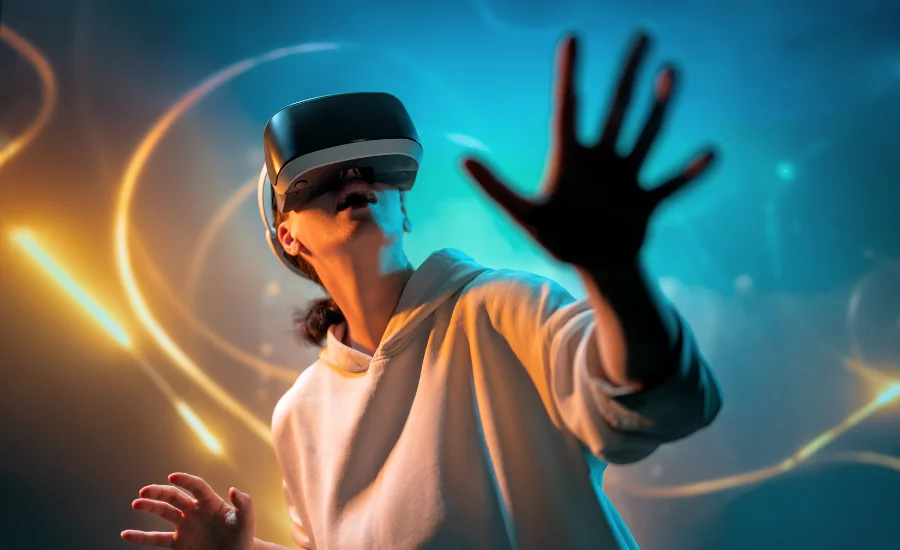
As a content writer specializing in software and tools, understanding the nuances of PC VR headsets is essential for providing accurate information. When selecting a VR headset for PC gaming, several key factors should be considered beyond just the brand name.
1. PC Compatibility and Performance
Prioritize a PC that meets the headset’s hardware requirements. A powerful CPU, GPU, and sufficient RAM are crucial for high frame rates and sharp visuals, ensuring a smooth and immersive VR experience without stuttering.
2. Tethered vs. Wireless
Choose between a tethered or untethered experience. Wired headsets offer lossless quality but can be restrictive. Wireless headsets provide freedom of movement, though they may introduce some latency and visual compression.
3. Display and Visuals
Focus on resolution, refresh rate, and field of view. Higher resolution reduces the “screen door effect,” a higher refresh rate ensures a smoother experience, and a wider field of view enhances immersion.
4. Tracking Technology
Select between inside-out and external tracking. Inside-out tracking is convenient and easy to set up, while external tracking systems, though requiring a more complex setup, can offer superior precision and accuracy for room-scale VR.
5. Comfort and Fit
For long gaming sessions, comfort is essential. Look for a headset with a balanced design, adjustable straps, and a comfortable face gasket. Custom-fitted options, though rare, can provide a perfect, tailored fit.
Best VR Headsets for PC and Console Gamers in 2025
| Headset | Key Features | Standalone | PC VR | Console VR | Starting Price |
| Meta Quest 3 | Snapdragon XR2 Gen 2, 4K+ Infinite Display, Full-color passthrough, Touch Plus controllers | Yes | Yes | No | $499 USD |
| PlayStation VR2 | 4K HDR OLED display, Eye tracking, Foveated rendering, Sense controllers with haptics | No | Yes | Yes (PS5 only) | $549 USD |
| Valve Index | High-fidelity audio, Lighthouse tracking, Knuckles controllers, High refresh rate | No | Yes | No | $999 USD |
| HTC Vive Pro 2 | 5K resolution, 120Hz refresh rate, 120° field of view, Hi-Res audio | No | Yes | No | $799 USD |
| Meta Quest 3S | Snapdragon XR2 Gen 2, 1832 x 1920 per eye resolution, Mixed Reality Passthrough | Yes | Yes | No | $349 USD |
| Pico 4 Ultra | Snapdragon XR2, 4K+ resolution, Pancake lenses, Eye and facial tracking | Yes | Yes | No | $550 USD |
| Apple Vision Pro | Micro-OLED displays, visionOS, Optic ID, External battery pack | Yes | No | No | $3,499 USD |
| Bigscreen Beyond | Micro-OLED displays, Custom-fitted face mask, Extremely lightweight (127g) | No | Yes | No | $999 USD |
| Pico 4 | 4K+ resolution, Pancake lenses, Lightweight design, 90Hz refresh rate | Yes | Yes | No | $420 USD |
| Meta Quest Pro | Snapdragon XR2+ Gen 1, Face and eye tracking, Self-tracking controllers | Yes | Yes | No | $999 USD |
Meta Quest 3
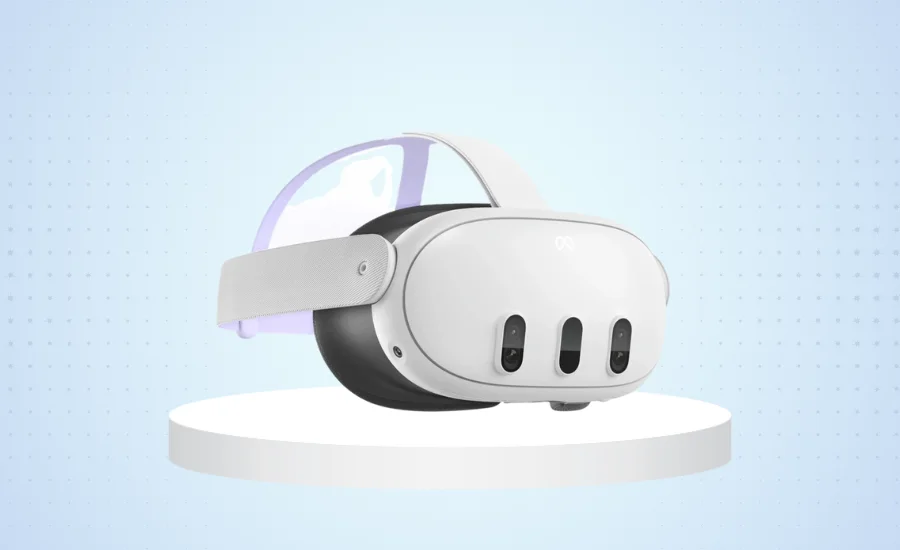
Launched in late 2023, the Meta Quest 3 is a major step forward for standalone VR. As a product from Meta, a company with a commanding market share, it benefits from a robust content ecosystem and a large user base.
The headset’s powerful Snapdragon XR2 Gen 2 chip provides a significant performance boost over its predecessor, making games look sharper and run more smoothly.
Its key selling point is the full-color passthrough, which enables mixed reality experiences that seamlessly blend the virtual and physical worlds. The redesigned Touch Plus controllers are more ergonomic and feature improved haptics, adding a new layer of sensory feedback to your games.
Key Features:
- 4K+ Infinite Display for sharp visuals.
- Full-color passthrough for mixed reality.
- Backward compatibility with the Quest 2 library.
- Redesigned, haptic-enhanced Touch Plus controllers.
Starting Price: $499 USD
PlayStation VR2
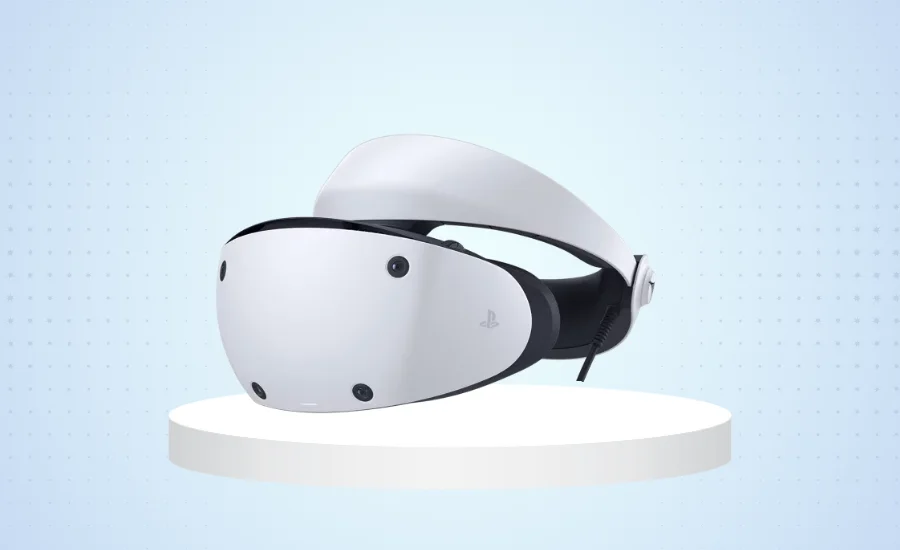
The PlayStation VR2 (PS VR2) is the dedicated VR headset for the PlayStation 5, designed to provide a high-fidelity console gaming experience. Unlike other headsets on this list, it is not a standalone device and must be connected to a PS5 console.
The PS VR2 offers an impressive 4K HDR OLED display, which provides vibrant colors and true blacks, and its eye-tracking technology allows for foveated rendering, a technique that improves visual fidelity where you are looking.
The Sense controllers, with their advanced haptics and adaptive triggers, mirror the innovative features of the PS5’s DualSense controller.
Key Features:
- 4K HDR OLED display.
- Eye tracking and foveated rendering.
- Sense controllers with advanced haptics and adaptive triggers.
- Simple, single-cable connection to PS5.
Starting Price: $549 USD
Valve Index
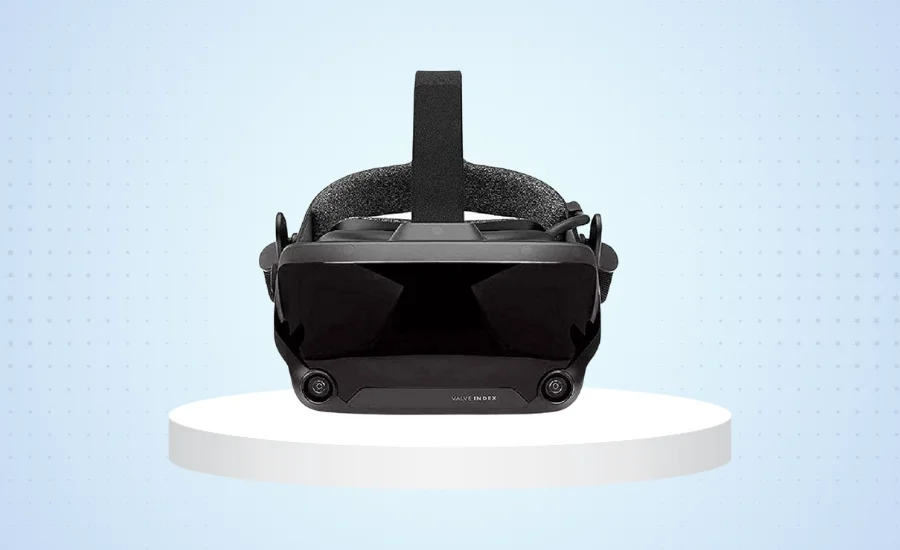
As a PC-only VR headset, the Valve Index is known for its premium features and high-performance design. It’s a favorite among PC gamers and VR enthusiasts.
The headset’s displays offer a high refresh rate, up to 144Hz, which reduces motion sickness and provides an incredibly smooth experience.
The Valve Index’s standout feature is its “Knuckles” controllers, which allow for individual finger tracking, providing a level of hand presence unmatched by most competitors. The external Lighthouse base stations provide precise, room-scale tracking.
Key Features:
- High-fidelity, off-ear audio.
- Advanced “Knuckles” controllers for individual finger tracking.
- High refresh rates (80Hz, 90Hz, 120Hz, 144Hz).
- Precise SteamVR Lighthouse tracking.
Starting Price: $999 USD
HTC Vive Pro 2
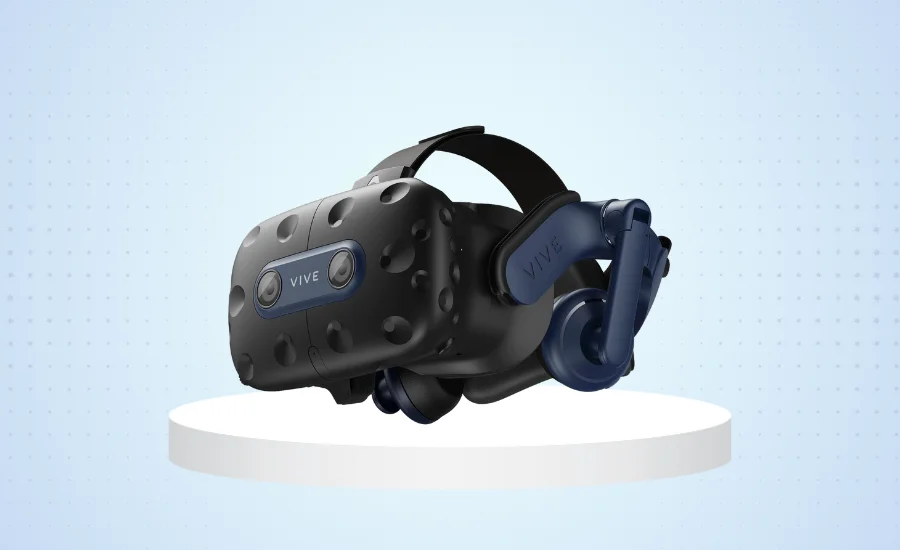
The HTC Vive Pro 2 is a high-end PC VR headset that caters to users who prioritize visual clarity. Its 5K resolution (2448 x 2448 pixels per eye) provides an exceptionally sharp image, minimizing the “screen door effect” often seen in lower-resolution headsets.
The wide 120° field of view and 120Hz refresh rate make for a comfortable and immersive experience. While it requires external base stations and controllers, its compatibility with the SteamVR ecosystem gives you access to a vast library of games and applications.
Key Features:
- 5K resolution for superior image quality.
- 120° field of view and 120Hz refresh rate.
- Adjustable IPD (Interpupillary Distance).
- Integrated Hi-Res certified headphones.
Starting Price: $799 USD
Meta Quest 3S
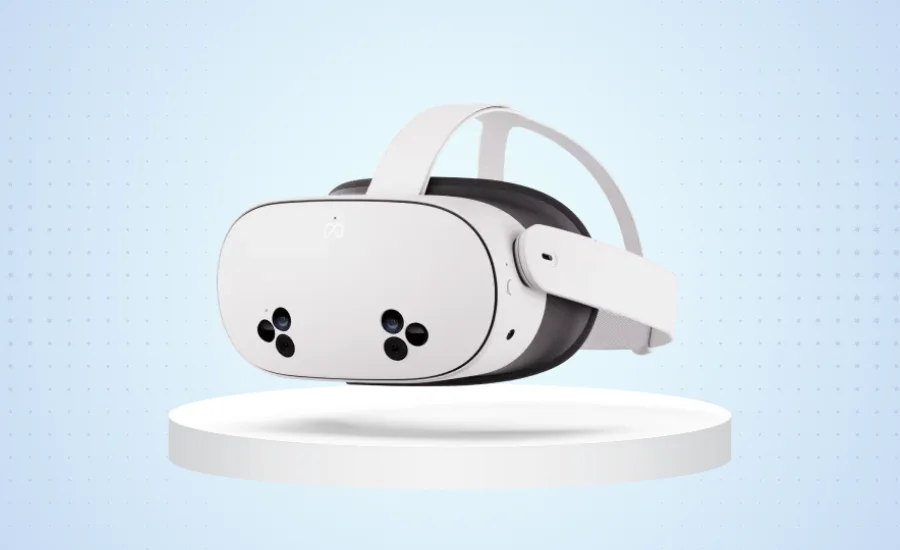
The Meta Quest 3S is a more budget-friendly version of the Meta Quest 3. Released by Meta to appeal to a wider audience, it offers many of the core features of the Quest 3 at a lower price point.
It uses the same powerful Snapdragon XR2 Gen 2 processor, ensuring smooth performance for modern VR games. While it has a slightly lower display resolution and uses Fresnel lenses instead of the pancake lenses found in the Quest 3, it still provides a solid mixed-reality experience with its color passthrough and is fully backward-compatible with the entire Meta Quest library.
Key Features:
- Powered by the Snapdragon XR2 Gen 2 chip.
- Mixed reality with full-color passthrough.
- Affordable entry point into the Meta ecosystem.
- Backward compatible with Quest 2 games.
Starting Price: $349 USD
Pico 4 Ultra
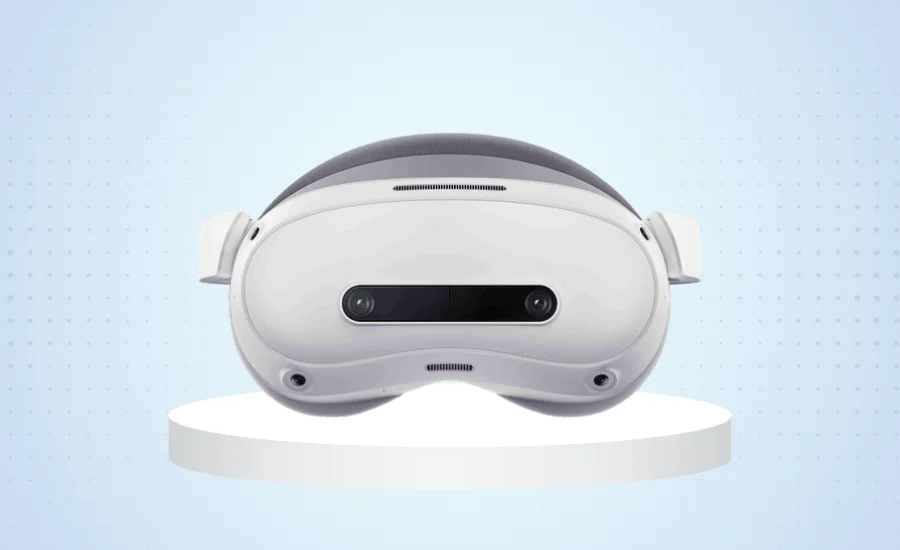
Pico, a VR hardware company owned by ByteDance, has made a name for itself with its innovative and consumer-friendly headsets. The Pico 4 Ultra is a premium standalone headset known for its slim and lightweight design.
It features a high-resolution 4K+ display and pancake lenses, which contribute to its sleek form factor and excellent image clarity.
It also includes eye and facial tracking, features often reserved for more expensive headsets, and provides an impressive wireless experience with its Wi-Fi 6E connectivity.
Key Features:
- High-resolution 4K+ display with pancake lenses.
- Lightweight and balanced design.
- Built-in eye and facial tracking.
- Wi-Fi 6E support for fast wireless streaming.
Starting Price: $550 USD
Apple Vision Pro
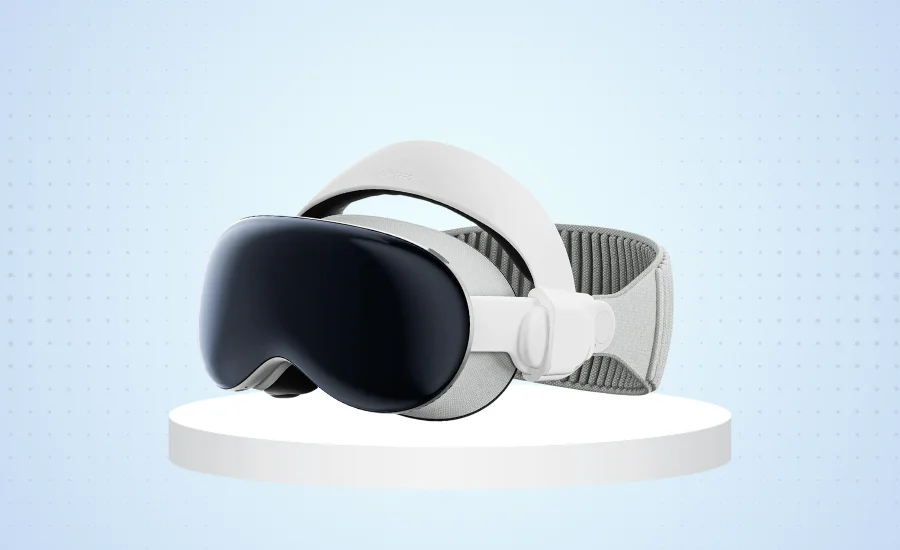
Released in 2024, the Apple Vision Pro is positioned as a high-end “spatial computing” device rather than a traditional VR gaming headset.
While its high price may be a barrier for most gamers, its technology is a look into the future of the industry. The device features an incredibly high-resolution micro-OLED display with 23 million pixels, providing a visual experience with stunning clarity.
Its visionOS operating system and unique Optic ID authentication method show Apple’s focus on user experience and privacy.
Key Features:
- Revolutionary micro-OLED displays with 23 million pixels.
- visionOS operating system for spatial computing.
- Optic ID for iris-based biometric authentication.
- External battery for extended use.
Starting Price: $3,499 USD
Bigscreen Beyond
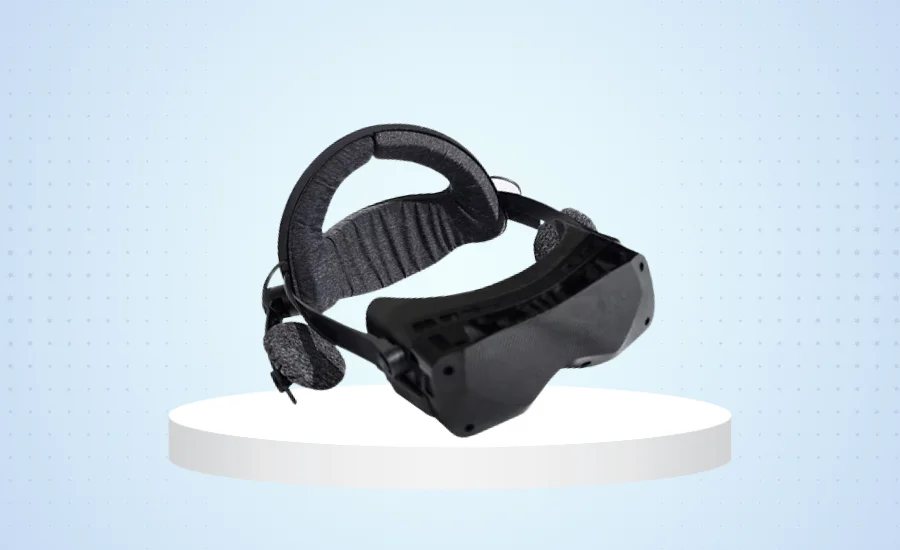
The Bigscreen Beyond is a unique PC VR headset that focuses on a single goal: creating the smallest and lightest headset possible. Weighing a mere 127 grams, it is specifically designed for comfort during long gaming sessions.
The headset features micro-OLED displays and is custom-fitted to your face using a 3D scan, ensuring a perfect fit and a maximized field of view.
While it requires external SteamVR base stations and controllers, its commitment to a comfortable, high-fidelity experience makes it a compelling option for dedicated PC VR gamers.
Key Features:
- Extremely lightweight design (127g).
- Micro-OLED displays for rich blacks and high contrast.
- Custom-fitted face mask for optimal comfort and FOV.
- Compatible with SteamVR Lighthouse tracking.
Starting Price: $999 USD
Pico 4
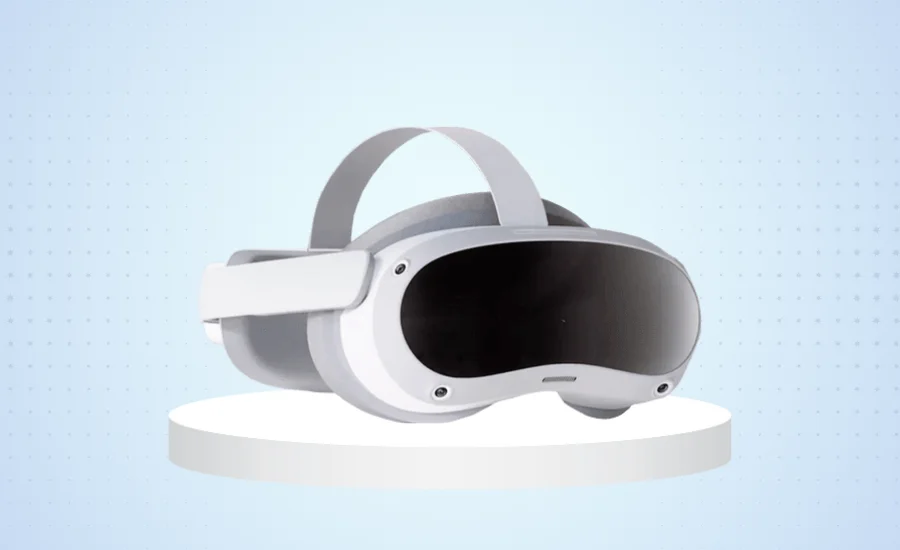
The Pico 4 is another strong contender in the standalone VR space, offering a balanced and lightweight design with a focus on ease of use.
It features a 4K+ resolution and pancake lenses, delivering a sharp and wide image without the bulk of older headsets.
Its simple setup and wireless operation make it an excellent choice for new users who want a hassle-free entry into VR gaming. While it has its own content store, it can also be used for PC VR through wireless streaming.
Key Features:
- 4K+ resolution with pancake lenses.
- Lightweight design for comfortable, long sessions.
- Wireless operation for untethered freedom.
- Access to both Pico and PC VR content libraries.
Starting Price: $420 USD
Meta Quest Pro
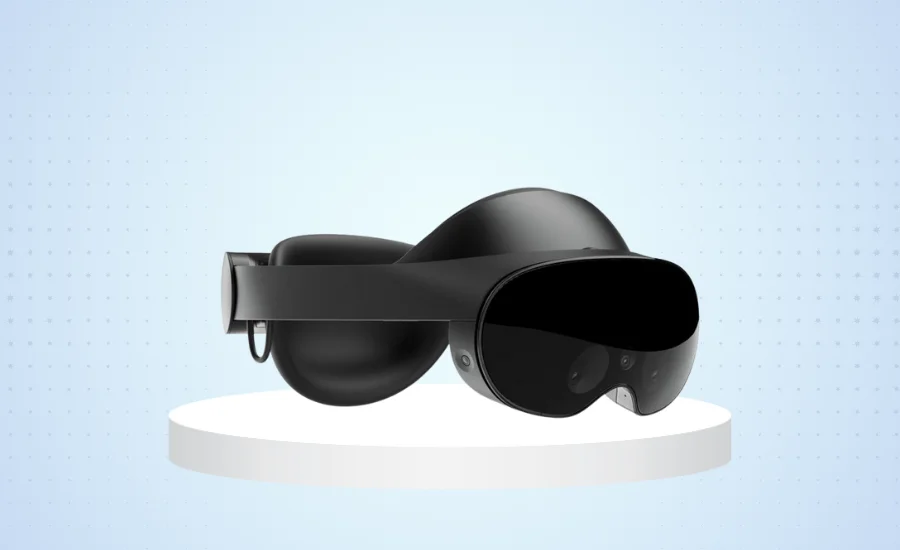
Originally positioned as a high-end mixed reality headset for enterprise and professional users, the Meta Quest Pro is now available at a more accessible price.
It is a powerful standalone device with a focus on productivity and collaboration, though it is also capable of running demanding games.
Its standout features include face and eye tracking for more expressive avatars and self-tracking controllers that don’t require external sensors. The open-sided design, while not fully immersive, allows for a unique mixed-reality experience.
Key Features:
- Face and eye tracking.
- Self-tracking Touch Pro controllers.
- Open-sided design for mixed reality.
- Balanced weight with the rear-mounted battery.
Starting Price: $999 USD
FAQs
What is the difference between standalone and PC VR headsets?
Standalone VR headsets, like the Meta Quest 3, have all the necessary components and processing power built in, allowing them to function without a tethered PC or console. In contrast, PC VR headsets, such as the Valve Index and HTC Vive Pro 2, must be connected to a powerful gaming computer to operate.
Which VR headset is best for beginners?
For beginners, a standalone headset like the Meta Quest 3 or Meta Quest 3S is an excellent choice. They are easy to set up, don’t require a powerful PC, and have a wide library of games and applications.
Do I need a powerful PC for VR gaming?
You only need a powerful PC for VR gaming if you plan on using a PC-tethered headset. These devices rely on the PC’s graphics card (GPU) and processor (CPU) to render high-fidelity graphics and smooth frame rates. For standalone headsets, a PC is not required.
Can I play Steam VR games on a Meta Quest headset?
Yes, you can play Steam VR games on a Meta Quest headset by connecting it to a VR-ready PC. This can be done wirelessly using Air Link or Steam Link, or with a USB-C cable.
Is the PlayStation VR2 compatible with a PC?
While the PlayStation VR2 is designed specifically for the PlayStation 5, you can use it with a PC via a third-party adapter. However, some of its key features, such as eye tracking and foveated rendering, may not be available when used in this way.
What is the “screen door effect”?
The “screen door effect” is a visual artifact where the fine lines that separate the pixels on the display become visible. This issue is more common in headsets with lower resolution, and newer high-resolution models have largely minimized it.
What are the benefits of mixed reality?
Mixed reality provides a unique experience by blending the virtual world with your physical surroundings. This allows you to interact with digital objects and content in your home, which is useful for not only gaming but also for collaboration, productivity, and training applications.
Which headset has better visual quality between the Meta Quest 3 and PlayStation VR2?
The PlayStation VR2, with its OLED displays, offers superior contrast and true black levels, which can provide a more immersive visual experience. The Meta Quest 3 uses LCDs and, while it has a higher overall resolution, the visual quality is a trade-off.
What is the key difference between the Valve Index and the HTC Vive Pro 2?
The Valve Index is highly praised for its advanced controllers with individual finger tracking and a high refresh rate up to 144Hz. The HTC Vive Pro 2, on the other hand, is known for its high-resolution 5K display, offering some of the sharpest visuals currently available in a PC VR headset.
Conclusion
Choosing the right VR headset depends on your personal gaming habits and budget. For those who want a versatile, all-in-one experience with a massive library of games, the Meta Quest 3 is a clear frontrunner. Its mix of standalone convenience and optional PC connectivity makes it an excellent choice for a wide range of users.
If you are a dedicated PC gamer seeking the highest level of performance and immersion, the Valve Index or HTC Vive Pro 2, with their superior tracking and visuals, are top contenders. For PlayStation enthusiasts, the PS VR2 is the only option, providing a console-specific experience with impressive features.
Headsets like the Pico 4 and Meta Quest 3S offer a more budget-friendly entry without sacrificing too many key features. Meanwhile, high-end devices like the Bigscreen Beyond and Apple Vision Pro represent the pinnacle of VR technology, albeit at a premium price. Regardless of your choice, the future of VR gaming is bright, with continuous advancements in both hardware and software. By considering your needs and the unique features of each headset, you can find the perfect device to unlock a new dimension of gaming.
